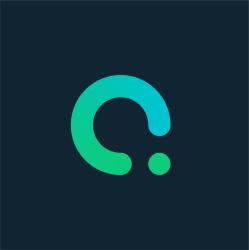The human side is often neglected. A person who needs to interact with a healthcare provider already has a problem. Improving the patient experience is one of the healthcare industry’s most significant challenges and an issue that has been underestimated for a long time. Crowded waiting rooms, getting medical tests approved, or making endless phone calls to get an appointment are just a few scenes that are always present in people´s minds.
Digital transformation can help change this world. New technologies simplify the paperwork and improve communication between patients and healthcare centers or medical providers. But it is not enough to launch new digital channels. They must be people-centered, simple, user-friendly, and intuitive and intend to improve users’ quality of life. This is why UX principles are fundamental when considering a healthcare sector solution.
In addition to the positive social impact of this kind of initiative, companies in the sector that make pioneering moves in this direction are also very well positioned in an increasingly competitive market.
Focused on experience
When one of the most important healthcare providers in the United States approached Making Sense, they had already developed an app. However, the results had not been satisfactory. They received many complaints from people who said they had difficulties using and understanding the application. Contrary to expectations, phone calls were growing (and dissatisfaction was increasing accordingly since the staff was not enough), and the addition of new customers began to slow down. The app was almost abandoned by patients, who chose the desktop experience, although it was becoming outdated.
The challenge, therefore, was to redesign the application with a focus on the user experience. All efforts should be made to make life easier for those who use it and, in addition, consider that this is an industry in which emergencies abound, to ensure that it is intuitive, easy, and provides quick answers.
The first step was to conduct a discovery process to understand all the different journeys that a user could go through: from the request for medical care, through authorization, to reimbursement for the treatment or service received. In each of these journeys, all the information was collected to identify the current problems that prevented greater user adoption, find potential solution paths, and create new flows to increase usage.
From the user’s point of view
One of the advantages of UX is that it puts itself in the user’s place: not only about how users use the tool but also how they perceive it, how they experience it, how they take advantage of it, and how they feel when using it. In an attempt to meet business needs, application development often focuses on functionality and leaves aside such relevant elements as whether users understand it, whether they can use it, or whether it meets their needs.
One of the outstanding achievements of this project – applicable to most providers in the sector – was to think in terms of a single solution model: a single window shop. It is common for someone who needs to complete a procedure at a healthcare facility to use different channels at different points. For example, a reimbursement request could be uploaded through the app, but then it would be necessary to log into a web portal to view the request status or make a phone call. The redesign allows all customer needs to be met end-to-end in a single place.
Aligned with the business
Not all the features available on the company’s website were clearly reflected in the application. This also generated some frustration among patients. Now, the redesigned application has full functionality. And, of course, work was done on the aesthetics so that the look and feel of the app were more functional and modern.
Our team also identified the need to define KPIs (key performance indicators), which are vital to understanding to what extent the use of the application is aligned with business objectives, including the number of tickets and complaints made through the app concerning the total and the average resolution time of any given case.
The expected results are that the filing of claims through this channel will increase by 30%, that the same percentage of new members of the company will use the app to process their membership application, and that in one year, the number of downloads in the app stores will double.
When a solution for companies in the healthcare sector is designed from a UX perspective, the benefit for the business is clear. The user will want to continue using it if it is easy, comfortable, and intuitive. If, in addition, it is modern, up-to-date, and can be easily downloaded from the main app stores, this will lead to higher loyalty levels.
Consistent benefits
On the other hand, a solid and organic application is established. With consistency each new functionality that is incorporated in the future will meet the same standards of quality and experience. Mere patches that degrade performance, increase maintenance costs, and open the door to potential errors will be avoided.
Another critical point addressed by UX is accessibility, mainly when we are talking about healthcare: that is, making the tool easy to use for people of different ages or with vision, hearing, or mobility impairments. Focusing on this aspect significantly improves the quality of the experience and enables many others to use the tool. Even the regulations in force in the United States contemplate fines for those who do not include accessibility features in their developments.
On the other hand, a virtuous circle is created where healthcare companies get to know their users better, allowing them to enter into a continuous improvement process with increasingly customized and timely services.
A person who needs to interact with a healthcare provider already has a problem. That’s why it feels so good when their trusted provider quickly delivers a solution.
